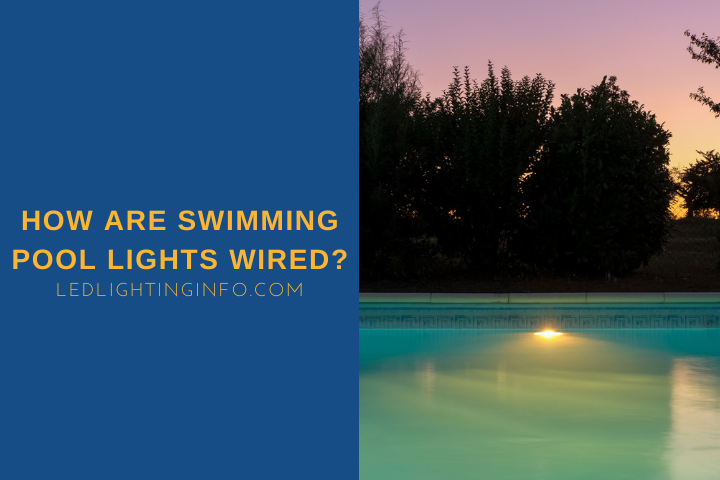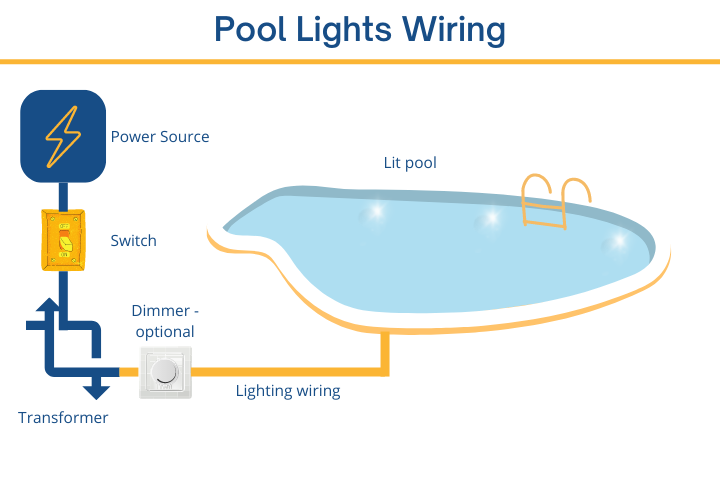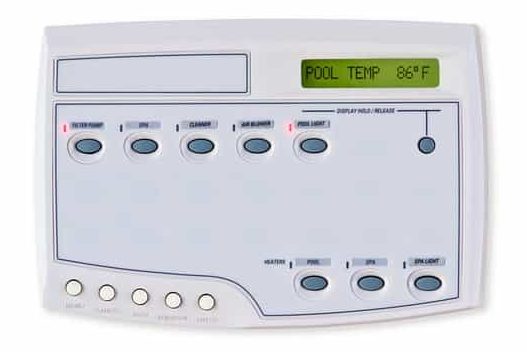It might sound quite daunting – how do you safely wire pool lights to ensure they work, considering they’re submerged?
Everyone knows about the dangers of water and electricity, so is it a massive project to ensure they’re connected safely?
Actually, it’s alright – although it depends on the type of lights as to how many steps are involved.
Pool lights and light fixtures come with sealed wires already attached. These are fed through conduits to a junction box and then wired into the mains. Low voltage lights need to be wired into a transformer to step the voltage down to a suitable level.
Let’s look in a little more detail at:
- How to wire up 12v pool lights (and the difference with mains voltage lights)
- What gauge wire you should use
- Whether you need to ground your pool lights
How To Wire 12V Pool Lights?
Wiring 12-volt pool lights isn’t too difficult a process.
All pool lights – whether 12 volts or 120 volts – have a sealed cable attached to them which is waterproof.
You don’t need to deal with the wires attached to the light at all.
Instead, you feed the cable through the conduit that you’ll already have or that you’d have drilled for the installation and run the cable to the location where you wire it up.
Pool lights tend to have a junction box.
You’ll run the power cable to this junction box and the cables from the pool lights to this box and then connect them, likely using wire nuts.
Because we’re talking about low voltage lights, there’ll also be a transformer between the power source and the junction box.
You’ll need to run a cable from the circuit breaker to the transformer and from the transformer to the junction box.
Some transformers – such as the Hayward J-Box Retrofit Kit – can be fitted inside a junction box to make things easier.
If you want to add a light switch, you can wire this before or after the transformer.
Dimmer switches can be used if your lights are dimmable, but these must be 12v dimmers (Amazon) installed between the transformer and junction box.
They can’t be installed between the circuit breaker and the transformer.
To wire up your pool lights:
- Make sure the power is off
- Run the cable from the lights through the conduit to the junction box
- Split open the wire, revealing the live and neutral wires, and the ground wire if it is present
- Run a cable from the circuit breaker to your transformer, making sure you connect the live, neutral, and ground wires in the relevant terminals
- Run a cable from the transformer’s output terminal to the junction box, connecting the relevant live, neutral, and ground wires.
- Inside the junction box, connect the live and neutral wires from the transformer to those of the pool lights. If the lights have ground wires, connect those to the ground wire in the cable too.
If you were installing mains voltage lighting, there’s no transformer; otherwise, the steps remain essentially the same.
Run a cable from the circuit breaker to the junction box directly, and then wire the individual live, neutral, and ground wires to those of the pool lights.
How To Wire Pool Control Panel?
When you talk about ‘pool control panels,’ there are two different products to which this term would apply. Both do different jobs, so it’s a little confusing.
The term can either apply to:
- An outdoor panel designed to be a secondary circuit breaker – that may have master switches for pool lights, your motor, and your pool heater
- A smart panel that enables you to control your pool lights from a separate hub or your smartphone
The type of control panel will impact where you wire it. If it’s the first type, you’ll want to install it before the transformer, on the circuit.
It should then have a wire running from the panel to the mains input for the transformer, which you would then wire as usual.
The purpose of these panels is to give you quick and easy access to a secondary circuit breaker outdoors.
You could use them as master switches to power down all your pool electricals from one convenient location.
The second type of control panel doesn’t need to be wired into the lights at all – it’s a completely separate device.
Instead, you mount it on its own circuit outdoors, and the smart relays on the circuit communicate with your (compatible) pool lights.
You just run a cable from your circuit breaker to the smart panel, wire it into the live terminal, and then wire the accompanying smart relay into it following the instructions.
These don’t work with just any brand of lights, but they often work across multiple brands, so check compatibility before you buy.
What Gauge Wire Should Be Used For Pool Lights?
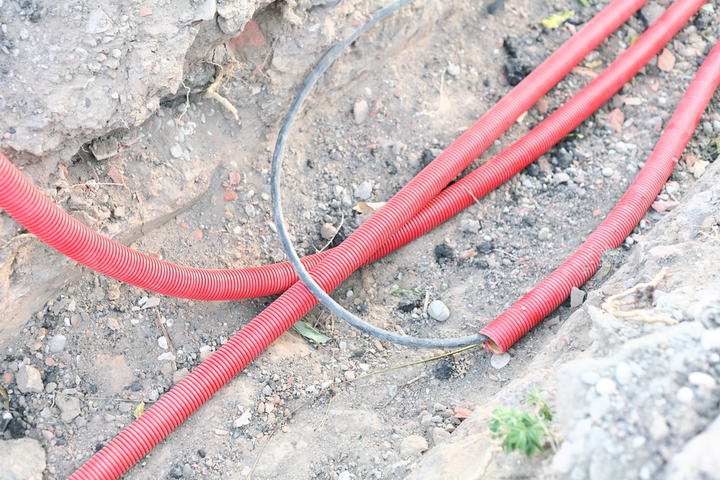
Because your pool lights will have sealed wire connecting them, the only wire you need to choose is that which runs from the circuit breaker to the transformer and from the transformer to the junction box.
But it’s more complex than choosing any wire for the job.
The wire running from the mains to the transformer isn’t so much of an issue, but once you get past the transformer, there’s a risk of voltage drop.
Voltage drop occurs when a current meets resistance, causing a percentage of the voltage to dissipate.
This happens in every electrical circuit.
But in a low-voltage circuit, it’s more important because losing a small amount of an already-low voltage can impact the performance of your lights.
Choosing a thicker cable will reduce the risk of voltage drop because there’s less resistance for the current.
With wire gauge, a lower number means a thicker wire – so while some people use 14/2 wire, it’s recommended to use 12/2.
However, if you’re installing your transformer a long distance from the junction box – say 100 feet or so – you should still choose 10/2 wire to ensure there are no problems.
What Is The Ideal Distance Of A Transformer From The Pool?
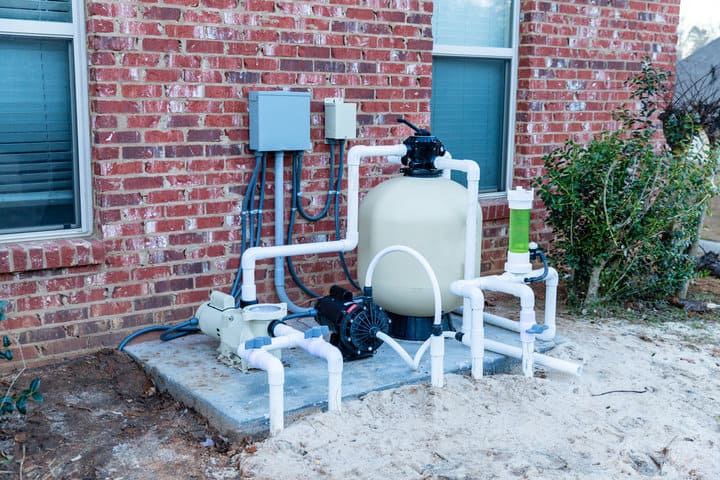
There is no single recommendation for the ideal distance from a transformer to the pool.
There is a minimum distance, though – you can’t have a transformer within 4 feet of the pool edge.
Of course, they are waterproof from rainfall, but they still have wires leading into them from the underside.
Because transformers still deal with mains voltage, you want to avoid pool splashes causing a short.
Then, it’s just about planning the distance between the transformer and the junction box where you wire up the lights.
If you have the junction box buried near the pool, you need to dig a sufficient trench for the wire to run from the transformer to reach the box – and make sure it’s a thicker 10/2 wire if that’s a long distance.
If the junction box will be near the transformer, then your distance is dictated by your chosen pool lights and how long their integrated cables are.
It’s no good installing a junction box and transformer too far from the lights so that the cables don’t reach.
Pool lights often come with different cable lengths to choose from when you buy them, so plan your wiring installation before you buy, and you should be fine.
Does A Pool Light Circuit Need To Be Grounded?
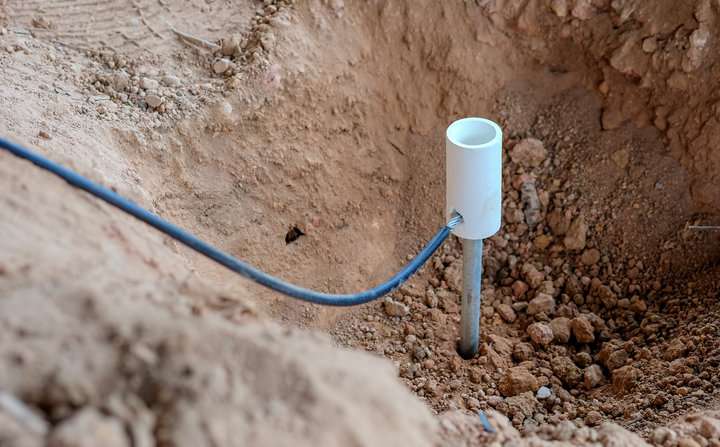
Traditionally, electrical items will have three wires, two of which are essential for how the light typically works.
The live wire carries the current to the device, and the neutral wire returns it to the source, completing the loop.
The third wire is a ground wire. Think of it as an ‘in case of emergency’ wire.
Suppose there’s a problem with the circuit. In that case, this wire ensures that the voltage is directed away and earthed to prevent any serious electrical fires or electrocutions.
Mains voltage pool lights will always have the ground wire, which must be wired into the circuit’s ground wire.
That’s absolutely vital.
There also has to be a Ground Fault Circuit Interrupter (GFCI) on the circuit, which is designed to cut the power if a ground fault is detected – when the voltage on the live and neutral wires is out of balance.
But low voltage lights don’t require grounding or a GFCI. So the lower voltage is nowhere near as dangerous.
Consider it optional, although your hand will be forced if your low-voltage lights don’t have a ground wire – you can’t open up the sealed cable and add one.
If they have a ground wire, you can either cap it off or wire it in – it’s still safer to ground it, so you might as well.
The GFCI is optional, but it’s safer to have one.
If you use low-voltage lights, the one element that must be grounded is the transformer – pay attention to that.
Once the current is past the transformer and has been stepped down to 12 volts, it’s not dangerous.
But at the transformer, you’re still dealing with a mains 120v current, so it has to be grounded for safety.
Final Words
Wiring up pool lights isn’t too tricky, provided you remember the steps involved.
It becomes slightly more tricky with low voltage lights since you need a transformer, but it’s only one extra step – and it means the lights you’re dealing with are safer in the long run anyway.
Remember to never have the power switched on when you do any wiring, even if it’s low voltage.
Have you wired your own pool lights, or did you hire someone?

